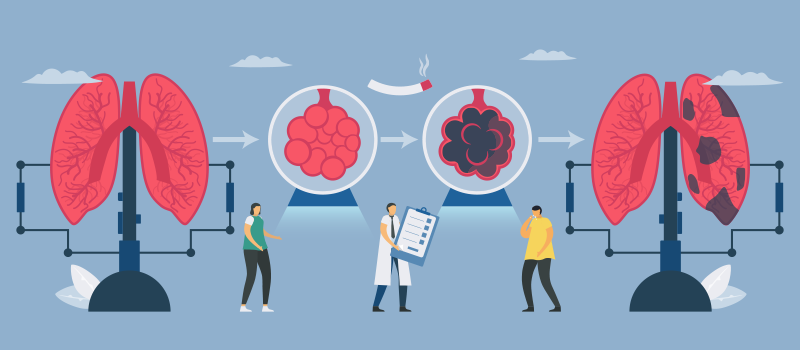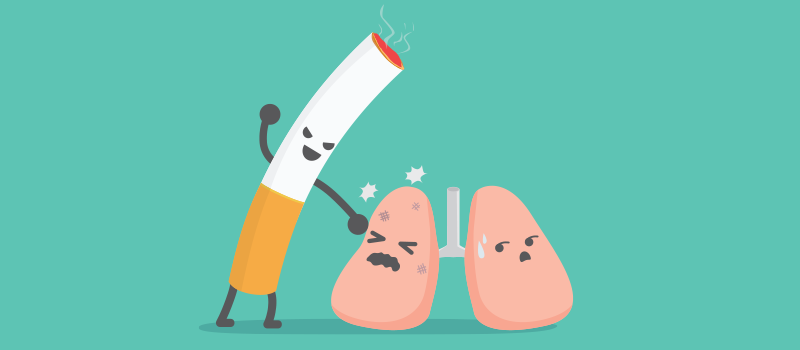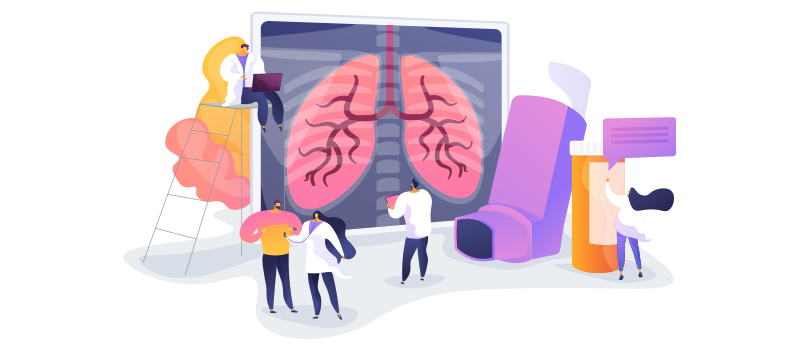What’s the Buzz
The Bee Healthy Blog
Common Respiratory Illnesses in Children

The lungs are a vital organ. We inhale outside air into our lungs to obtain oxygen and exhale carbon dioxide. The human respiratory system is a vulnerable entry point for disease-causing germs and other environmental pollutants such as tobacco smoke or other toxic fumes. For this reason, respiratory diseases affecting the nose, throat, airways, and lungs are very common, more so in children who do not yet have sufficient immunity against many bacteria and viruses that can infect the human respiratory tract.
Indeed, respiratory diseases are one of the leading causes of death and disability worldwide in both adults and children. The World Health Organization (WHO) reports that asthma is the most common chronic disease of childhood and affects 1 out of 7 children globally. Pneumonia is a leading cause of childhood mortality in kids under the age of 5.
In this article, we will explore some common childhood respiratory diseases. Knowing the signs and symptoms of these diseases can help you seek timely care for your child.
What are the 5 most common respiratory diseases in the world?
Five common respiratory diseases that cause severe illness and death in countries around the world include:
Asthma. Nearly 335 million people globally suffer from asthma, a condition in which the airways become narrow, making it difficult to breathe and causing coughing, wheezing, and shortness of breath.
Chronic obstructive pulmonary disease (COPD): This respiratory disease affects an estimated 65 million people worldwide and is responsible for 3 million deaths each year. It is a chronic lung disease (long-lasting condition) in which there is inflammation and narrowing of the airways.
Acute lower respiratory tract infections. These include bronchitis, bacterial or viral (influenza), pneumonia, and whooping cough. They are among the top three causes of adult and childhood death and disability worldwide. Moreover, acute lower respiratory infections predispose children to chronic lung disease later in life.
Tuberculosis. Some 10 million people suffer from tuberculosis (TB) globally, a serious bacterial infection that mainly affects the lungs. However, TB is not common in developed countries like the U.S.
Lung cancer. It is one of the most common and most lethal cancers that afflict humans, claiming some 1.6 million lives each year.
What are the most common childhood respiratory diseases?
Upper Respiratory Infection or Common Cold
Upper respiratory infections (also called common colds) are caused by viruses. This type of viral infection is one of the leading causes of kids falling sick. Recurrent respiratory infections are common, and the average kid has six to eight colds each year. Colds spread easily among children who are in close contact and with hand-to-nose contact (touching the eyes, nose, and mouth without washing the hands).
Symptoms of an upper respiratory viral infection typically include runny nose, stuffy nose, sneezing, sore throat, cough, headache, body aches, and fever.
Most colds are not serious and clear up within a few days. If you want to give your child an over-the-counter cold remedy, be sure to check the appropriate dose for children (the dose may depend on the child’s body weight). This is especially important in young infants and children under 2 years old. You should also know that aspirin is not safe for children because it can lead to Reyes syndrome, a serious condition associated with brain and liver damage.
Sinusitis
This is an inflammation of the sinuses (air-filled sacs or cavities connected to the nose). A buildup of fluid and swelling prevents the free flow of fluid and can lead to infection. Sinusitis often accompanies a cold or flu and may be triggered by respiratory tract allergies.
Symptoms of sinusitis include pain and pressure behind the eyes and nose, congestion, runny nose, cough, post-nasal drip, and sore throat. Sinusitis symptoms can last longer in children than adults. A neti pot can be used to irrigate the sinuses. Over-the-counter decongestants may help to keep your child comfortable.
Your child’s pediatrician may prescribe an antibiotic if there is a bacterial infection causing sinusitis. Children with recurrent sinusitis, chronic sinusitis, or more persistent symptoms may need surgery to clear the sinuses.
Strep Throat
Strep throat is common amongst children and is responsible for around 30% of sore throats (as opposed to only 10% in adults). This bacterial infection can be treated with antibiotics, usually penicillin or amoxicillin. These drugs are available as a liquid suspension to make it easier for younger children to swallow.
Untreated strep infection can lead to serious health complications such as rheumatic fever, pediatric autoimmune neuropsychiatric disorder, and other mental health problems. That’s why it’s important to take your child to see their doctor without delay if they have a sore throat, pain with swallowing, and fever.
Respiratory Syncytial Virus (RSV)
This is a common viral infection of the lungs and respiratory system that can affect younger children in particular. Most children have been infected with respiratory syncytial virus (RSV) by the time they are 2 years old. Symptoms of RSV infection include dry cough, sore throat, runny nose, congested nose, sneezing, headache, and low-grade fever. The respiratory symptoms associated with this infection tend to be milder in older children and adults. Antibiotics are not used for treating viral infections like RSV.
Influenza or Flu
This is a viral infection caused by influenza viruses. Flu symptoms include high fever, fatigue, cough, runny nose, muscle aches, and digestive symptoms. Untreated influenza can lead to complications such as pneumonia and secondary bacterial infections. Influenza can be particularly dangerous in young children.
Vaccines can significantly reduce the risk of contracting influenza and make the symptoms less severe. Children above 6 months can receive the flu vaccine each year.
Antibiotics are not used to treat viral illnesses like the flu. However, an antiviral medication called oseltamivir (Tamiflu) is sometimes prescribed within the first 48 hours to shorten the duration of the viral illness. Other than this, you can help your child fight the infection with rest, fluids, and acetaminophen for fever and muscle aches.
Asthma
According to the Centers for Disease Control and Prevention (CDC), more than 6 million kids in the U.S. have asthma, a serious lung disease. The American Lung Association estimates that asthma attacks are a leading cause of hospitalization in young children. Symptoms during asthma attacks include coughing, wheezing, chest tightness, and difficulty breathing. Triggers for asthma attacks include dust, pollen, and pet dander.
Children with asthma are at higher risk of pneumonia or bronchitis. You should have your child evaluated by their pediatrician if they have a lot of coughing and respiratory distress (shortness of breath), especially during exercise.
Bronchitis
The bronchi are the large tubes that transport air from the outside into the lungs and out. Bronchitis is a serious inflammatory condition of the bronchi and is usually caused by a virus. The risk of developing bronchitis is higher after a flu or cold. Persistent symptoms of cough, especially a chesty cough that lingers for 3-4 weeks, is a classic symptom of bronchitis, along with runny nose, congestion, sore throat, wheezing, chest pain, fever, chills, and tiredness.
Pneumonia
Pneumonia is a potentially dangerous lung infection that can be caused by bacteria, viruses, and fungi. It is often secondary pneumonia that occurs after a cold, flu, or strep throat. Symptoms typically include high fever, cough, rapid breathing, chest pain, and tiredness. Pneumonia can be more challenging to diagnose in children than adults and can lead to complications like respiratory failure.
Antibiotics can treat pneumonia caused by bacteria, but they will not cure viral pneumonia. Rest and fluids are advised to treat viral pneumonia. Vaccination against whooping cough, pneumococcus, and measles can help to reduce your child’s risk of contracting pneumonia.
Preventing Respiratory Diseases in Children
One of the easiest ways to prevent respiratory infections in your children and yourself is to follow some simple tips like covering your cough or sneezing with an elbow or tissue, washing your hands with soap and water frequently, and avoiding touching your eyes, nose, and mouth. You should also limit contact with sick people and ensure that you and your child are vaccinated as recommended by doctors.
References:











SOCIAL